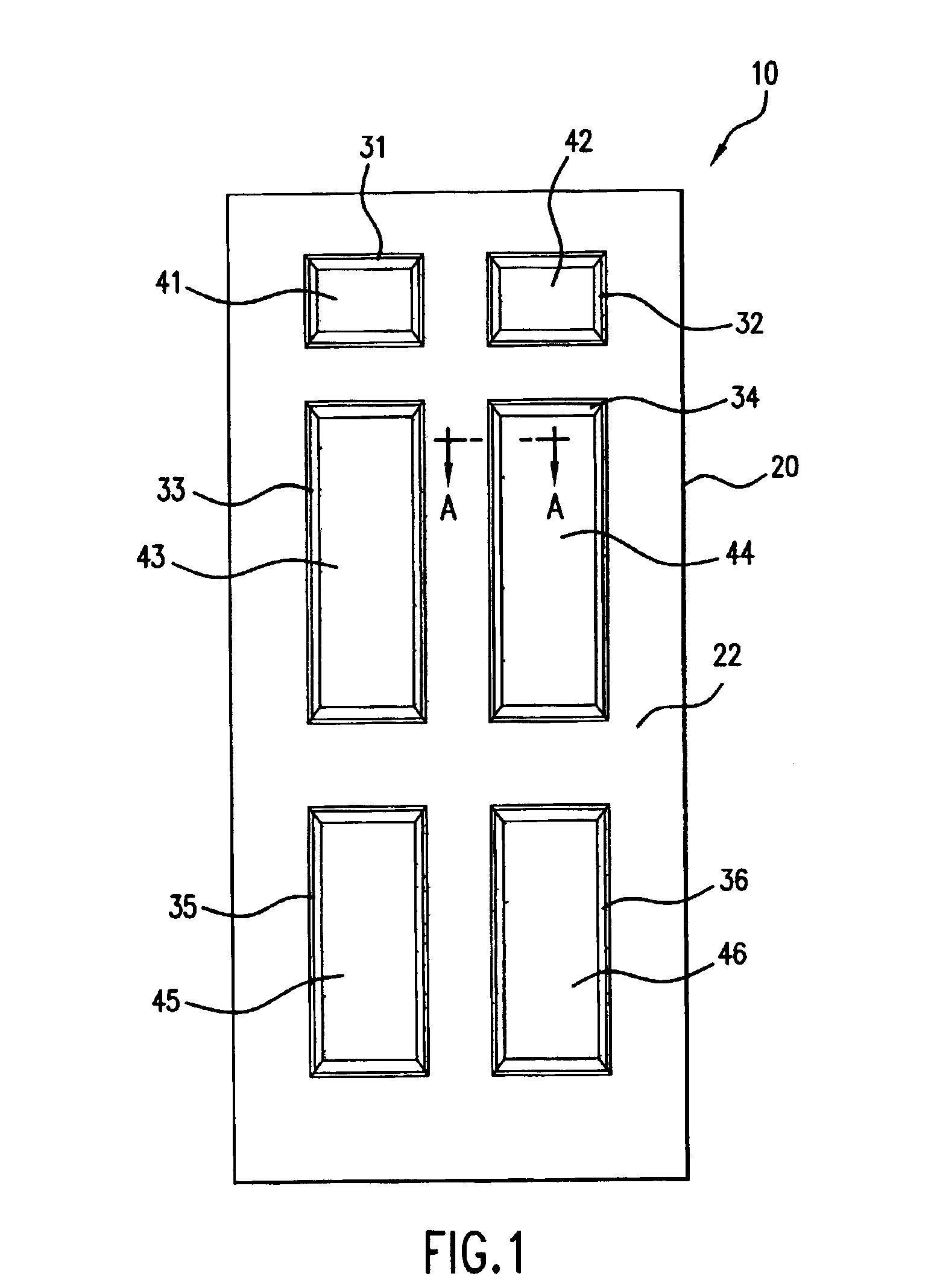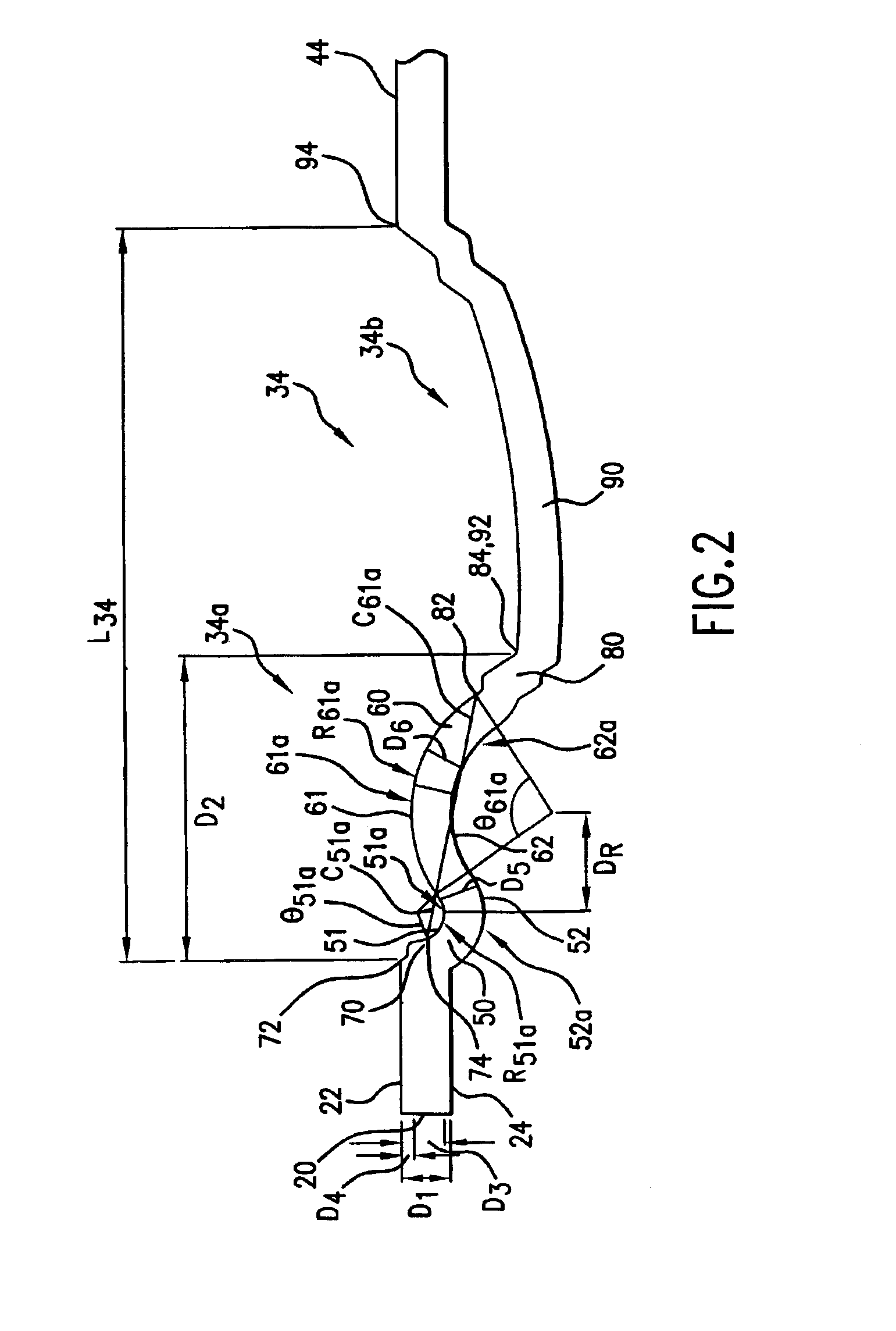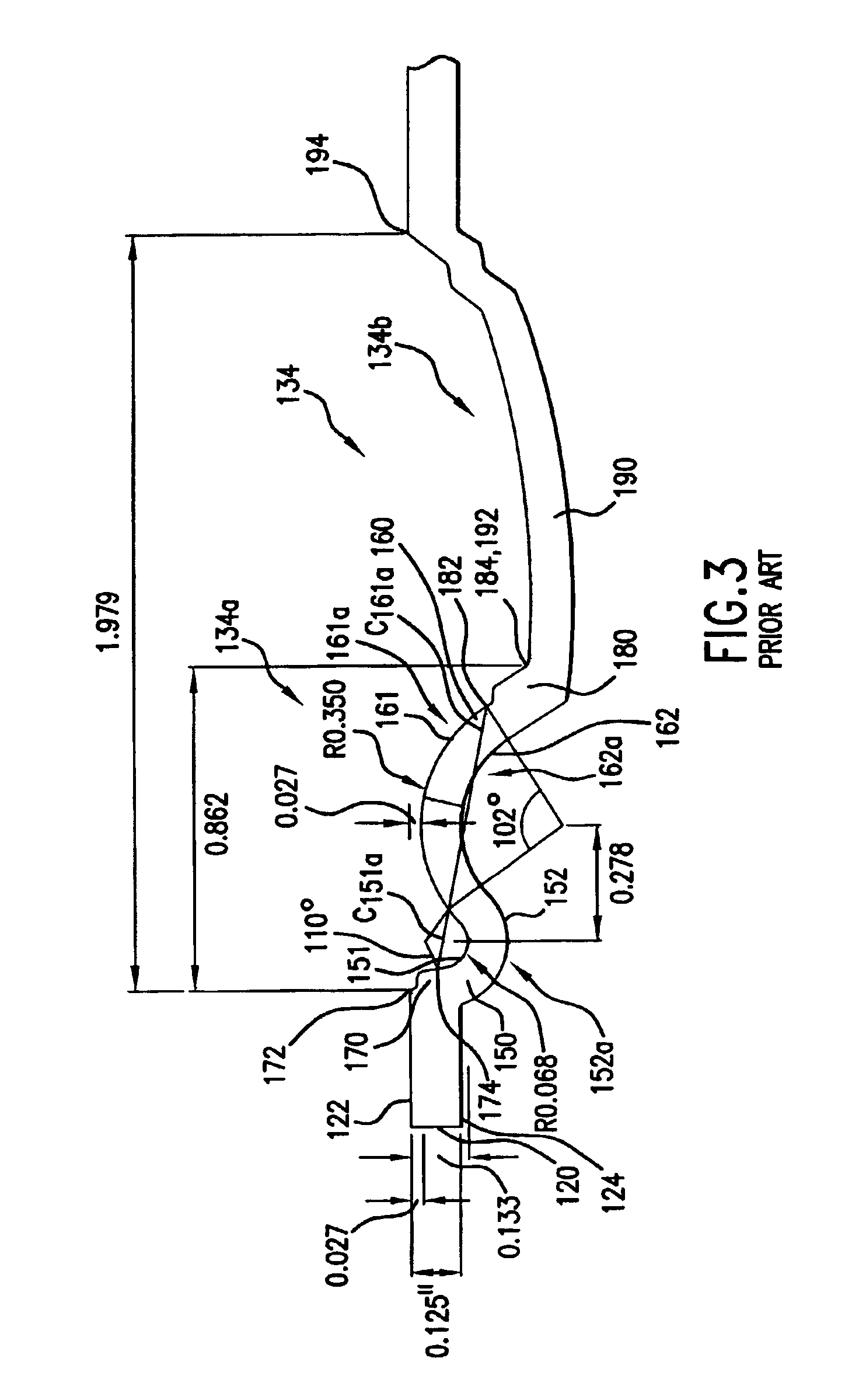Molded skin with curvature
a skin and curvature technology, applied in the field of skins, can solve the problems of heavy metal doors, inconvenient installation, and easy damage to metal doors, and achieve the effect of uniform surface appearan
- Summary
- Abstract
- Description
- Claims
- Application Information
AI Technical Summary
Benefits of technology
Problems solved by technology
Method used
Image
Examples
Embodiment Construction
[0022]Embodiments of the invention include products and processes for molding a skin. A sheet typically comprises a cellulosic material, such as for example, a fiberboard mat. Preferably, the embodiments shown comprise a nominal caliper ranging between 0.100 inch and 0.130 inch molded product made using a dry process fiberboard mat, comprising approximately 1% to approximately 15% urea formaldehyde resin and approximately 0% to approximately 4% wax, initially approximately two inches thick, and molded under a temperature of approximately 250 degrees F. to approximately 550 degrees F. and a pressure of approximately 400 pounds per square inch (psi) to approximately 1000 psi. Most preferably, the temperature is 300 degrees F. Alternatively, a phenol formaldehyde resin is used for the fiberboard mat, which is molded under a temperature of approximately 350 degrees F. to 400 degrees F.
[0023]In the exemplary embodiments shown in the figures, two sheets forming the exterior surfaces of a ...
PUM
| Property | Measurement | Unit |
|---|---|---|
| angle | aaaaa | aaaaa |
| angle | aaaaa | aaaaa |
| density | aaaaa | aaaaa |
Abstract
Description
Claims
Application Information
 Login to View More
Login to View More - R&D
- Intellectual Property
- Life Sciences
- Materials
- Tech Scout
- Unparalleled Data Quality
- Higher Quality Content
- 60% Fewer Hallucinations
Browse by: Latest US Patents, China's latest patents, Technical Efficacy Thesaurus, Application Domain, Technology Topic, Popular Technical Reports.
© 2025 PatSnap. All rights reserved.Legal|Privacy policy|Modern Slavery Act Transparency Statement|Sitemap|About US| Contact US: help@patsnap.com



